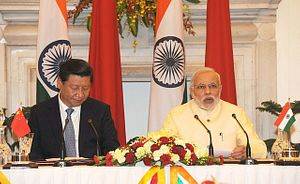In mid December, the second meeting of the Joint-Study Group (JSG) of the regional cooperation framework known as Bangladesh-China-India-Myanmar Economic Cooperation (BCIM-EC) was held at Cox’s Bazaar (Bangladesh).
This concept has been under discussion for more than a decade and a half. The vision for the (BCIM-EC) was first put forth by Professor Che Zhimin, then Deputy Director of the Economic and Technological Research Centre of the Yunnan Provincial People’s Government, during a visit to India in November 1998, at an event organized by the Institute of Chinese Studies (ICS) and the Indira Gandhi National Centre for the Arts in New Delhi. In August 1999, the BCIM Forum for Regional Cooperation officially came into existence with a meeting held in Kunming, wherein the final statement of this meeting was titled, “The Kunming Initiative.” While academics and civil society in India have been positive towards BCIM, for more than a decade the Indian government evinced little enthusiasm.
While China, Myanmar, and more recently Bangladesh have shown real interest in the project, the Indian government has been guarded, partly because of scepticism vis-à-vis China that has prevailed in sections of the government and intelligentsia. Recently, though, attitudes have begun to change. Only a few months after the BCIM Car Rally between Kolkata and Kunming in February 2013, BCIM found mention in the joint statement issued on May 20, 2013 after the visit of Chinese Premier Li Keqiang to India. The two countries agreed to set up a JSG to study specific programs on building the BCIM-EC.
BCIM-EC progress was also followed up in China by then Indian Prime Minister Manmohan Singh. Both countries had already established the JSG on BCIM-EC and further agreed to hold the first JSG meeting in December 2013. Finally, on December 18-19, 2013, the first ever JSG meeting on BCIM-EC was held in Kunming.
With the Indian government’s focus on regional connectivity and China’s push for a Southern Silk Road, all four countries are now engaged in the initiative, as articulated during the second JSG meeting in Cox’s Bazar in Dhaka. Each country agreed to flesh out their vision for the corridor for the next meeting at Paschimbanga, Kolkata in 2015.
The discussion at the recent meeting revolved round the K2K (Kunming-Ruili-Bhamo-Lashio-Mandalay-Tamu-Imphal-Sylhet-Dhaka-Kolkata) route, which is 2,800 km long and part of the historic Silk Route, and is possibly the best route for the corridor.
With the objective of putting plans into progress, all four countries agreed to prepare a combined country report on the seven thematic areas as identified at the first JSG: connectivity; energy; investment and financing; trade in goods and services and trade facilitation; social and human development and poverty alleviation; sustainable development; and people-to-people contact. The broader areas on which these reports would will are the objectives of BCIM-EC, its concept, scope and elements, principles and modalities of cooperation, and framework of cooperation.
While China will prepare reports on connectivity and investment, India is likely to focus on energy and trade and will aim to identify actionable areas and specific projects, with the ultimate objective of deepening economic cooperation among the four nations. According to an initial estimate, the total cost of BCIM-EC projects will be about $22 billion.
The India-China joint statement, issued during the visit of Chinese President Xi Jinping to India in September 2014, made specific reference to the continuity and support for BCIM-EC.
The current Indian government has given clear indicators that it is likely to place regional integration high on its economic diplomacy agenda, be it SAARC, ASEAN or BCIM. The last two are especially important to India’s Act East Policy. While it is necessary to sensitize stakeholders in the NER, along with members of the strategic community, about the benefits of regional connectivity, it is also important to focus on developing the NER and improving its connectivity with the rest of the country, if India is to be a meaningful participant in the BCIM Project.
For a project like BCIM to be successful, it is imperative that all stakeholders, national and sub-national, are taken on board, and that their concerns are successfully addressed. If India is to be a proactive player in the BCIM project, it must fulfill three important pre-requisites: effective communication among New Delhi, other member-states, and the various Indian state governments involved, consensus between all important players, and meticulous coordination.
The BCIM Corridor provides India with a strong opportunity not only to improve ties with China, give a fillip to its Act East Policy, and further improve ties with Bangladesh, but also to show that it has the ability to successfully implement ambitious projects.
Manish Vaid is a Junior Fellow with Observer Research Foundation. Tridivesh Singh Maini is a Senior Research Associate with The Jindal School of International Affairs, Sonepat.

































